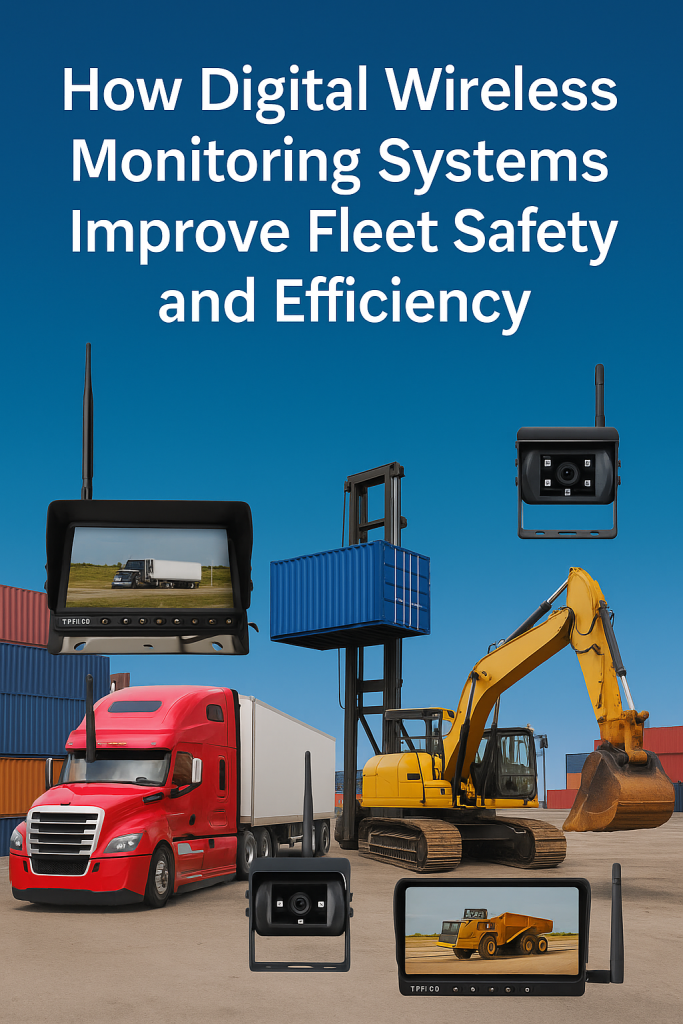In the logistics and industrial sectors, vehicle safety has become more than a compliance requirement — it’s a business advantage.
Modern digital wireless monitoring systems offer fleet operators real-time visibility without complex wiring, helping reduce accidents, downtime, and operating costs.
Let’s explore how this technology is transforming daily fleet operations.
1️⃣ Enhanced Safety Through Real-Time Vision
One of the most important benefits of wireless monitoring is instant situational awareness.
Drivers can monitor blind spots, rear zones, or cargo areas through high-definition displays that connect wirelessly to cameras.
-
No cable interruptions
-
Faster signal transmission
-
Better visibility in poor lighting
💡 Result: Fewer reversing accidents and safer maneuvering in tight spaces.
2️⃣ Simplified Installation = Less Downtime
Traditional wired systems can take hours to install, especially on long trailers or heavy trucks.
A digital wireless system removes the need for complicated wiring, saving both labor cost and vehicle downtime.
Fleet managers can now equip or relocate cameras quickly — ideal for multi-vehicle operations or leased fleets.
3️⃣ Lower Maintenance and Fewer Connection Failures
Over time, cables and connectors in wired systems can wear out from vibration, moisture, or corrosion.
Wireless setups eliminate these failure points.
With IP68/IP69K waterproof cameras, your system stays reliable even in rain, mud, or snow.
That means fewer repairs and longer lifespan for your equipment.
4️⃣ Smarter Fleet Monitoring and Recording
Modern digital systems do more than just display images.
Many come with built-in DVRs, split-screen functions, and WiFi app connections for reviewing footage remotely.
Managers can analyze driver behavior, improve training, and collect visual records for safety or insurance purposes.
5️⃣ Perfect for All Vehicle Types
From trucks and buses to forklifts, tractors, and construction vehicles, digital wireless technology adapts to different needs:
-
Trucks: Rear and side-view cameras reduce blind spots.
-
Forklifts: Wireless monitors improve visibility in narrow aisles.
-
Construction equipment: Durable cameras resist vibration and dust.
-
Trailers: Long-distance wireless range ensures stable connection.
6️⃣ The Future of Fleet Safety
Digital wireless systems are paving the way for AI-assisted monitoring — including object detection, driver alerts, and auto-recording of unsafe events.
Companies investing now will stay ahead in both safety and efficiency.
Conclusion
Wireless monitoring isn’t just a trend — it’s the foundation of safer, smarter, and more efficient fleets.
By upgrading to a digital wireless monitoring system, you eliminate wiring issues, reduce maintenance, and keep your drivers and assets protected.

